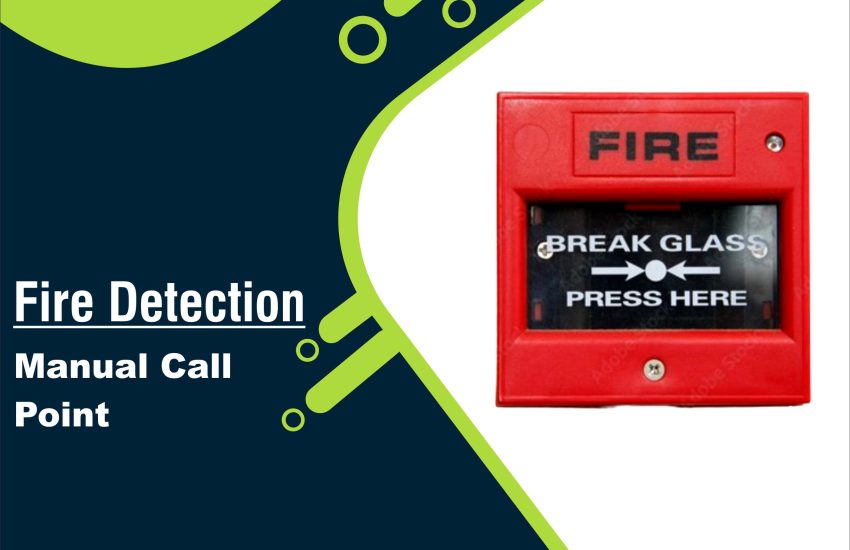Fire Alarm Manual Call Point (MCP) is a key part of any fire safety system. It allows individuals to manually trigger the fire alarm in an emergency. This guide covers everything you need to know about manual call points, including types, installation, benefits, and how to choose the right one.
What is a Fire Alarm Manual Call Point?
A manual call point is a device that activates the fire alarm system when a person presses or breaks it. In an emergency, it allows anyone to raise the alarm and alert others of the danger. Typically, the device has a glass panel that must be broken to trigger the system, but some models use buttons instead.
How Does a Fire Alarm Manual Call Point Work?
When someone presses or breaks the call point, it completes the electrical circuit inside the device. This sends a signal to the fire alarm system, activating the alarm. Modern models often feature a reset function, so they can quickly be put back into service after being used.
Types of Fire Alarm Manual Call Points
There are several types of manual call points. Here are the most common:
- Standard Break Glass Call Points: These are the traditional manual call points. They have a glass panel that must be broken to trigger the alarm.
- Push Button Call Points: These models require a user to press a button to activate the alarm. They are easier to reset and more durable than break glass versions.
- Weatherproof Call Points: These call points are designed for outdoor use or environments with moisture exposure. They provide reliable operation in harsh conditions.
- Addressable Manual Call Points: In an addressable fire alarm system, each manual call point has a unique address. This allows the fire control panel to pinpoint the exact location of the alarm.
- Wireless Manual Call Points: These call points work with wireless fire alarm systems. They are ideal for buildings where running wires is difficult or impractical.
Benefits of Fire Alarm Manual Call Points
Manual call points offer several important benefits:
- Quick Detection: They allow individuals to quickly activate the fire alarm, ensuring the system triggers without delay.
- Ease of Access: Call points are placed in accessible locations, ensuring anyone can activate the alarm in an emergency.
- Compliance: Installing manual call points meets fire safety regulations in many countries, such as NFPA 72 and BS 5839.
- Minimized False Alarms: Modern designs minimize accidental activations, reducing false alarms.
- Reliability: Manual call points are built to last and offer dependable performance in emergencies.
Installation of Fire Alarm Manual Call Points
To ensure effectiveness, install manual call points correctly. Here are the key steps:
- Choose the Right Location: Install call points in areas where people can easily access them, such as near exits and hallways. They should be mounted at a height of 1.4 meters.
- Follow Regulations: Ensure the placement complies with local fire safety standards, including NFPA 72 and BS 5839.
- Connect to the System: Securely wire the call point to the fire alarm system. Make sure all connections are stable.
- Test the System: After installation, test the manual call points to ensure they activate the alarm when used. Regularly maintain and test the system for optimal performance.
- Ensure Accessibility: If needed, install manual call points that are accessible to people with disabilities. Some models can be placed at lower heights or have visual and audible indicators.
Key Considerations When Choosing a Fire Alarm Manual Call Point
When selecting a manual call point, consider the following factors:
- Building Type: Choose a call point suited for the environment. For outdoor areas, weatherproof models are ideal. For indoor spaces, standard models are typically sufficient.
- User-Friendly Design: Select call points that are easy to operate, especially under stress. Push-button models are often quicker and simpler to reset than glass-break types.
- Durability: Ensure the call point can withstand heavy use, particularly in high-traffic areas.
- Regulatory Compliance: Verify that the call points meet local fire safety standards, such as BS 5839 and NFPA 72.
- System Integration: Choose call points that can integrate with your existing fire alarm system. If you have an addressable system, pick addressable call points for easy identification.
- Cost and Warranty: Compare prices and check the warranty offered. A reliable warranty ensures long-term support.
Conclusion
Fire Alarm Manual Call Point is an essential safety device in any building. It enables people to manually trigger the alarm in an emergency, ensuring quick action in case of a fire. By choosing the right type of call point, installing it properly, and maintaining it regularly, you can significantly improve the safety of your building.


